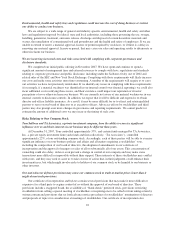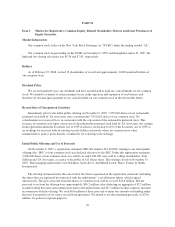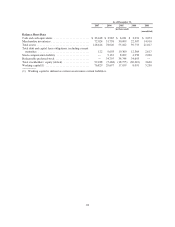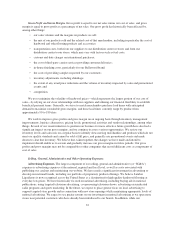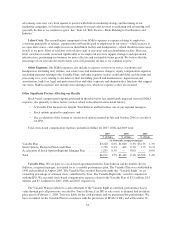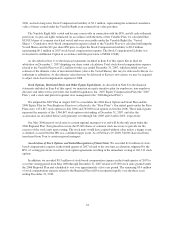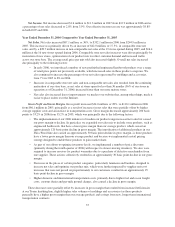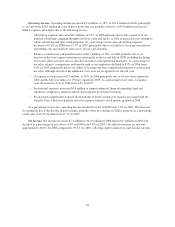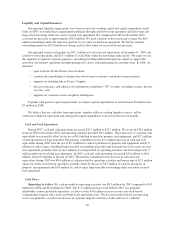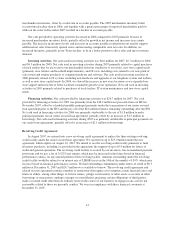Lumber Liquidators 2007 Annual Report Download - page 38
Download and view the complete annual report
Please find page 38 of the 2007 Lumber Liquidators annual report below. You can navigate through the pages in the report by either clicking on the pages listed below, or by using the keyword search tool below to find specific information within the annual report.Gross Profit and Gross Margin. Gross profit is equal to our net sales minus our cost of sales, and gross
margin is equal to gross profit as a percentage of net sales. Our gross profit has historically been affected by,
among other things:
• our sales volumes and the margins on products we sell;
• the mix of our products sold and the related cost of that merchandise, including in particular the cost of
hardwood and other flooring products and accessories;
• transportation costs, both from our suppliers to our distribution center or stores and from our
distribution center to our stores, which may vary with factors such as fuel costs;
• customs and duty charges on international purchases;
• the cost of third-party carrier services providing customer deliveries;
• in-house finishing costs, particularly for our Bellawood brand;
• the costs of providing samples requested by our customers;
• inventory adjustments, including shrinkage;
• the extent of any retail price reductions and the volume of inventory impacted by sales and promotional
events; and
• competition.
We try to minimize the volatility of hardwood prices—which represents the largest portion of our cost of
sales—by relying on our close relationships with our suppliers and utilizing our financial flexibility to establish
beneficial payment terms. Generally, we strive to match merchandise purchase lead times with anticipated
demand to maximize sustainable gross margins, and those lead times currently range by product from
approximately 90 to 180 days.
We work to improve gross profits and gross margin on an ongoing basis through inventory management
improvements, logistics alternatives, pricing levels, promotional activities and vendor relationships, among other
things. Several of our recent initiatives to position our business for more effective future growth have also had a
significant impact on our gross margins, and we continue to assess various opportunities. We review our
inventory levels and sales mix on a regular basis to identify slow-moving merchandise and products which do not
meet our quality standards and cannot be sold at full price, and generally use promotional events and mark-
downs to clear that inventory. We believe that, taken together, the changes we have made and intend to
implement should enable us to sustain and gradually increase our gross margins in future periods. Our gross
profits and gross margins may not be comparable to other companies that record different costs as components of
cost of sales.
Selling, General, Administrative and Other Operating Expenses.
Advertising Expenses. The largest component of our selling, general and administrative (or “SG&A”)
expenses is advertising expenses at the national, regional and local level, as well as costs associated with
publishing our catalogs and maintaining our website. We have made a significant investment in advertising to
develop our national brands, including our portfolio of proprietary product offerings. We believe Lumber
Liquidators is now recognized across the United States as a destination for high-quality hardwood flooring at
everyday low prices. We have historically focused on national advertising, including buying ads in national
publications, using targeted television advertising, co-sponsoring television shows, advertising on syndicated
radio programs and sports marketing. In the future, we expect to place greater focus on local advertising to
support targeted store growth and in connection with new store openings while maintaining appropriate levels of
national advertising. We expect to see greater returns on our investment in national advertising as we open more
stores near potential customers who have already been introduced to our brands. In addition, while our
32


